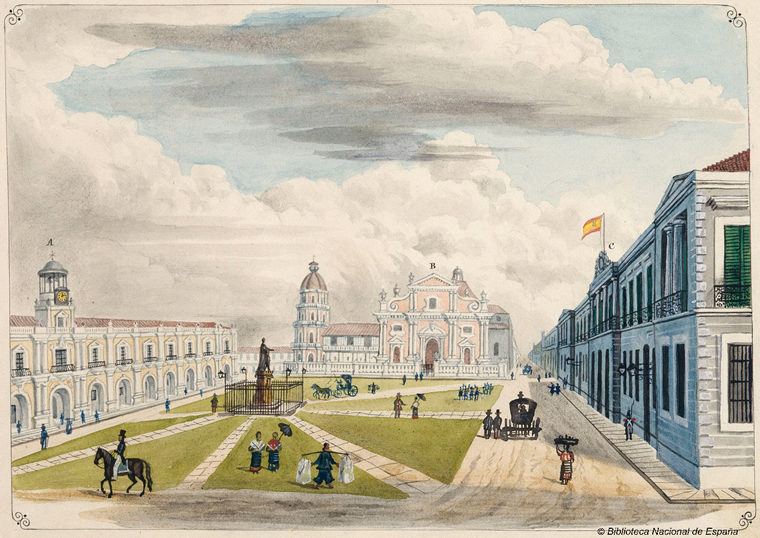 Painting of the Plaza Mayor de Manila in Intramuros circa 1847. From the Vistas de las islas Filipinas y trajes de sus habitantes at the Biblioteca Nacional de España. Photo: flickr.com
Painting of the Plaza Mayor de Manila in Intramuros circa 1847. From the Vistas de las islas Filipinas y trajes de sus habitantes at the Biblioteca Nacional de España. Photo: flickr.com
This article was first published on 8/16/2015

uring the time of Jose Rizal, the country was known as the "Pearl of the Orient." The Spaniards, despite all their faults, built some amazingly beautiful cities in these "Islas." Clear water ran through the Pasig river and life was wholesome for all who lived here.
Compare that idyllic past with today's Metro Manila and the difference is striking. The entire metropolis seems to be enveloped by a dark gray patina of soot. The city looks drab and dirty. Travelling around the city, one notices that dirt, grime, and weather stains mar the surfaces of buildings and homes alike. Look around and there are almost no vistas with crisp vibrant colors. Everything just looks old, drab, and gray.”
Thanks for the most part to the Filipino's love for diesel engines. Passenger jeepneys and buses and many private vehicles run on diesel fuel. Diesels despite being heavy polluters are the engines of choice because of their fuel economy, plus the fact that in the Philippines diesel fuel is less expensive than unleaded gasoline.
Then there's also the two-stroke motorcycle engine favored by Pinoy tricycle drivers. Two-stroke engines are even worse polluters than diesels because of the amount of oily soot they spew out of their tailpipe.
According to the World Health Organization (WHO), air pollution kills around 7 million people worldwide every year. And a recent study by physicists at the University of California, Berkeley estimates that in China alone pollution kills 4,000 Chinese each day. And the undeniable fact is that Metro Manila, like most major cities in the Philippines is now dirty and polluted. We are no longer the glistening "pearl" we once were.
While overpopulation has played a major role in turning our cities into what they are now, it will take time and a major upheaval in ingrained cultural and religious attitudes to address that problem. However, there are quick, and relatively straightforward steps that can be taken to ameliorate the worsening pollution problem.
First: raise the price of diesel fuel to reflect its actual cost for polluting the environment. Also include in the calculation the healthcare costs for the millions who are sick as a direct result of breathing in diesel-laden emissions. The price of diesel and all other dirty fuels should be raised and made significantly higher than unleaded gasoline or other clean-fuel alternatives.
Second: phase out the two-stroke engines of tricycles. Local and National governing bodies like the Land Transportation Office (LTO) can disallow registration and licensing of those type of engines for use on public roads. Local governments can also withhold business permits for tricycle groups or associations that use two-stroke engines. These changes should be phased in over time to allow tricycle owners to more easily adopt to the new rules.
Filipino representatives to global conferences on the environment have been continually harping on developed countries to pollute less. But the sad fact is that although the Philippines is not a top global polluter, we seem to be doing dishearteningly little to clean up our own dirty environment.
We need to change things now to give tomorrow's Filipinos a cleaner, healthier country than what we have today. Lets hand over to them a true "Pearl of the Orient." Published 5/5/2019
|